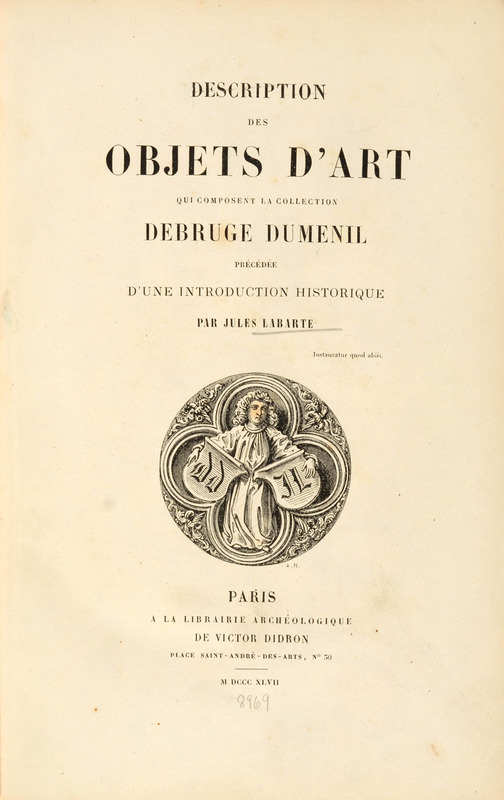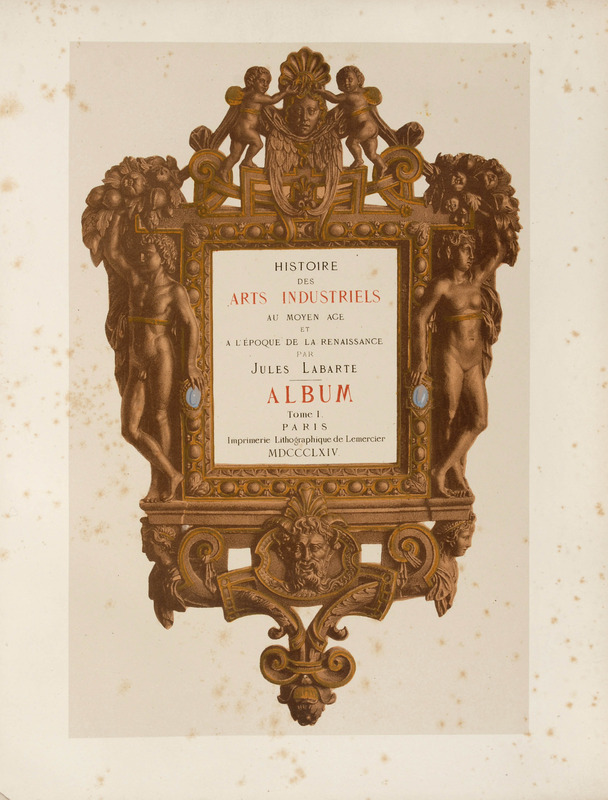Art Historians and Artists
Jules Labarte
The 19th-century publications of Jules Labarte (1797-1880) are not only fundamental for the study of the Byzantine minor arts, which he calls “industrial arts,” but they also document the growing interest in the subject as well as the evolution of art and archaeological illustration in the nineteenth century.
As an aspiring lawyer, Labarte married the daughter of wealthy collector Louis-Fidel Debruge-Dumenil (1788-1838). By the time of Debruge-Dumenil’s death, the collection contained more than 15,000 items representing the history of art, including a very large number of Byzantine, western medieval, and Renaissance objects. The heirs sold some of the collection but tasked Labarte with selecting, classifying, and identifying the remaining objects, a job he did with great meticulousness. To educate himself, he visited libraries, museums, and private collections throughout Europe, attended lectures and meetings of various societies, and researched the history of various media extensively.
For the catalog, which was published in 1847 (Hollis #5919323), Labarte wrote an introduction that was more than 400 pages and that included histories of sculpture, painting, calligraphy, engraving, enamels, metalwork, ceramics, glass, jewelry, locks, clocks, furniture, and liturgical equipment. Woodcut illustrations were interspersed throughout the text. Although not as luxuriously illustrated or elaborately published as other catalogs, Labarte’s work was well-received, and the erudite introduction became one of the fundamental works on the subject of the minor arts.
When the remaining objects of the family collection were sold in 1850, the demand for Labarte’s book increased, and the publisher Didron pressed Labarte to agree to produce a second edition. He refused for several years, but, in the meantime, he loaned the original woodcuts to a publisher in London for the publication of an English translation of his introductory text (Hollis # 1569006). In the preface, the translator Fanny Palliser (1805-1878) explains: “It gives a complete history of the origin and development of the decorative arts during the Mediaeval and Renaissance periods; and, as we have no work in English on the same subject, and the French catalogue has been long out of print, it has been thought that a translation, divested of references to that well-known Collection, would be of interest and use. The work of M. Labarte deserves on every account to be known and circulated.”
Labarte and his publisher took advantage of the popularity of his first book and advances in book illustrations for a revised edition. He expanded the text and added enough high-quality illustrations to fill four volumes, which appeared in 1864-1866. The publisher used a combination of traditional engravings, photolithography, and chromolithography for the illustrations, which critics praised for their photo-like accuracy and rich colors. In an effort to reduce cost, the next edition, published in 1872-1875, includes fewer plates. For the illustrations, the publisher reused some of the blocks from the 1860s edition, but he also experimented with the latest technique, heliography.


